The Group Theatre, Revisited
Eighty-three years after the first play presented by the Group Theatre debuted on Broadway, it has debuted again, Off-Off Broadway, produced by the ReGroup Theater, which aims to bring back the 23 plays that the Group ensemble performed in its ten years of existence.
The House of Connelly by Pulitzer-winning playwright Paul Green remains a shocking play—indeed, it is in some ways more shocking now than it was in 1931, when Group co-founder Lee Strasberg directed a cast that included Stella Adler, Franchot Tone and Clifford Odets (who had exactly one line.) Strasberg and Adler became famous acting teachers, Tone a movie star, Odets a major American playwright and then a Hollywood burnout, and the Group Theatre became…"legendary”—for having developed “Method acting” in America, and for believing theater should make a difference in the world.
The House of Connelly takes place on a Southern plantation whose deceased patriarch, Confederate General Connelly, had a child with one of his black slaves, and then, as a judge, condemned that grown-up child to death, never publicly acknowledging his paternity. Now the Old South has faded—both its ugliness, and its prosperity—and the General’s white son, Will Connelly, holds the promise of helping to usher in a New South. Patsy, the daughter of a new, hard-working tenant farmer on the Connelly plantation, woos and wins Will—until Will’s widowed mother questions Patsy’s motives, urging her son to marry a rich Southern belle instead. In Green’s original version—the version that ReGroup is staging—the play ends in tragedy. Ironically, the Group insisted that Green rewrite the ending for them to make it more hopeful.
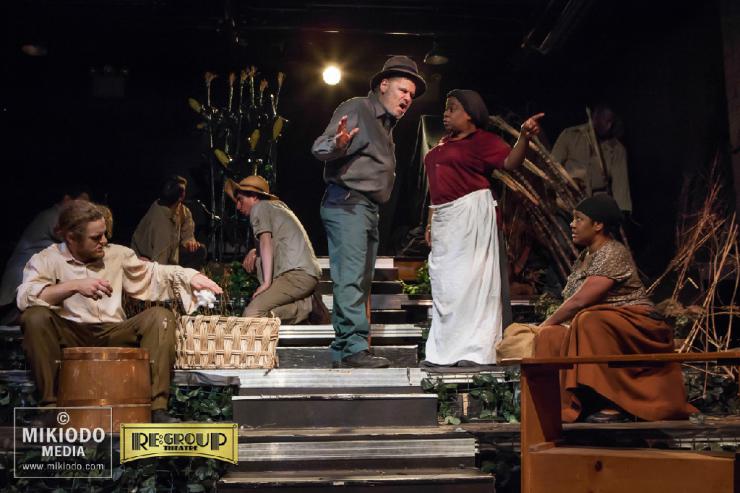
The House of Connelly is no Waiting For Lefty, the Clifford Odets play about a strike by New York City taxi drivers that galvanized theatergoers and union workers in the city and throughout the country. Although one could argue that Green’s theme is the difficulty of making needed changes, it is hard for me to see his play as smoothly fitting the Group’s (and ReGroup’s) definition of a great play—“propaganda for a better life.”
It feels in places uncomfortably outmoded: Green makes villains out of two African-American characters he describes in his stage directions as “sibyl-like…demonic creatures,” “huge…sexual and fertile.” (In fairness, there is much evidence in his biography that Green, a native of North Carolina and a professor as well as a prolific playwright, was considered a champion of civil rights. Richard Wright, for one, asked Green to adapt his novel “Native Son” for the stage, which Green did in 1940.)
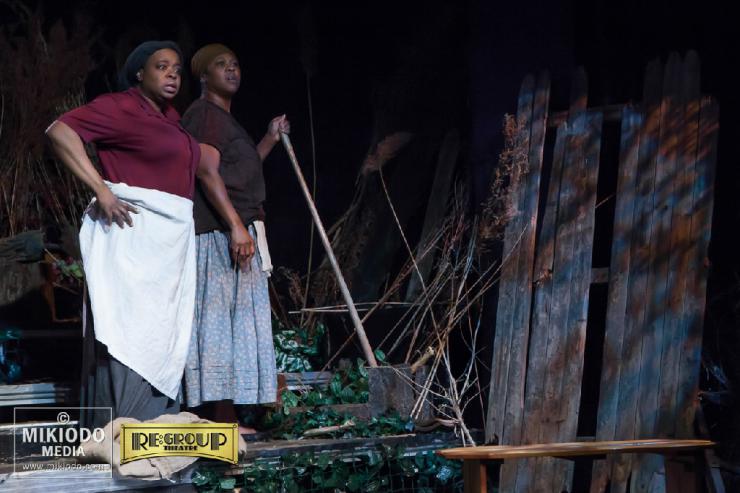
It helps to know that The House of Connelly was chosen serendipitously; the already-written script was available, Group co-founder Cheryl Crawford having attained the rights to it. (The Group’s best-known plays, such as Odets’s Awake and Sing, and Golden Boy, were subsequently developed specifically for the Group.) What astonished the critics and launched the Group’s popularity was not Paul Green’s script but Group members’ performances, the result not just of a new philosophy of acting, but of an intense rehearsal period that included twelve weeks of communal living and round-the-clock theater exercises, followed by a month of rehearsing in Broadway’s Martin Beck Theater. (Standard rehearsal period today for a Broadway show is a total of four weeks.) As Harold Clurman, one of the Group’s three co-founders, later noted, “concern over the play gave way to the actors’ far greater absorption in it as a vehicle for the strengthening of their craft.”
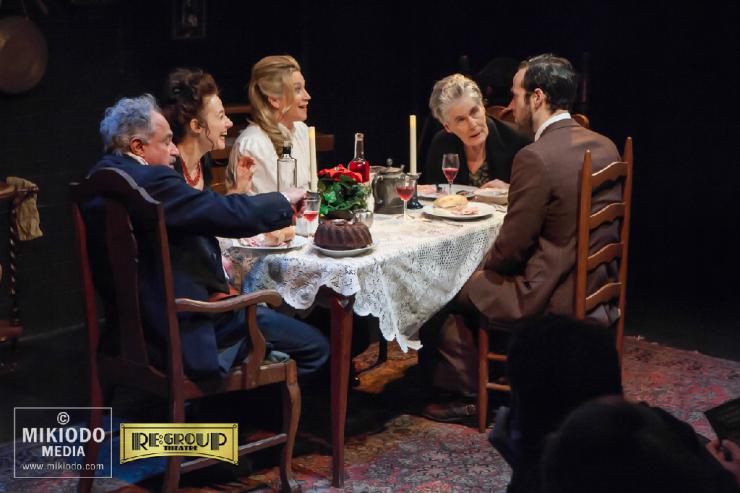
If the sixteen cast members of the current production deliver credible performances, they won’t elicit the startled reaction that greeted the original—in part precisely because the Group’s then-revolutionary approach to acting (emotional truth on stage) has become standard. In any case, “we’re not trying to recreate how they directed it,” says director Allie Mulholland, the committed and enterprising artistic director who began the ReGroup four years ago.

Previous ReGroup Theatre productions have been so effective that Wendy Smith singles the company out in her new preface to the recent reissue of her 1990 history, Real Life Drama: The Group Theatre and America, 1931-1940
It would be wrong to judge the Group Theatre entirely by their first production (or the ReGroup by this, its most recent.) Previous ReGroup Theatre productions have been so effective that Wendy Smith singles the company out in her new preface to the recent reissue of her 1990 history, Real Life Drama: The Group Theatre and America, 1931-1940, focusing on two of the Group plays that ReGroup has revived so far, including 1931- (the dash is part of the title) by Paul and Claire Sifton: “The blistering account in '1931-' of a proud man, sure when he loses his job that he’ll soon find another only to descend through successive levels of desperation to destitution and rage,” Smith writes, “didn’t seem at all out of date in the ReGroup’s ferocious production.”
Mulholland wants to re-ignite the spirit of the Group. “Our intent is not to do natural history dioramas; time capsules,” he says in the lobby of theater after the show. “These plays are so relevant that the thing that shocked me most about them is that they’d gone out of print.” ReGroup has published nine of the plays in three volumes. To Mulholland, the enduring lessons from the Group Theatre are not just about the craft of acting. “The plays had a point. They leave you with something. The lesson is: Aim higher. Don’t try to present subway-talk plays. Most plays I hear are like things that people say on the subway, that I put my headphones on so I don’t have to listen.”
Are there current theater companies doing in the twenty-first century what the Group Theatre tried to do in the 1930s?
“Maybe there are small companies somewhere, in Peoria or wherever, doing this kind of work,” Mulholland replies. “But I don’t know of any.”


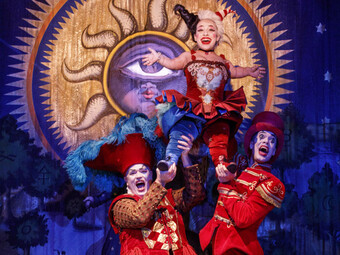



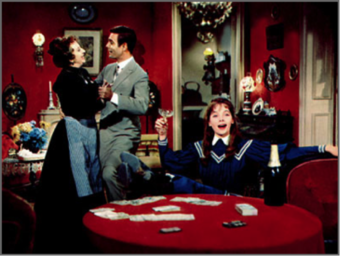

Comments
The article is just the start of the conversation—we want to know what you think about this subject, too! HowlRound is a space for knowledge-sharing, and we welcome spirited, thoughtful, and on-topic dialogue. Find our full comments policy here
While I can't comment on ReGroup's productions, never having seen any, I must take exception to what Mulholland says above, “Maybe there are small companies somewhere, in Peoria or wherever, doing this kind of work, […] But I don’t know of any.” Could be a question of what's meant by "this kind of work."
I spent about 5 years researching and writing a play about the Group Theatre that was part of the last season of Traveling Jewish Theatre, the ensemble I co-founded in 1978. My inspiration for writing about the Group came from my recognition that they were (arguably, perhaps) the first artist-led ensemble theater in U.S. history. As such, I felt a great affinity to their story and deep gratitude for what they had accomplished -- including the creation of a theater that represented immigrants and working class people on the American stage for the first time.
If one sees the "kind of work" the Group pioneered as theatre that address the inner and outer lives and concerns of people that the audience can identify with, created in a non-commercial process that aims to deepen the actors' connections to the material, then I find no shortage of companies – some tiny, some not-so-tiny - in many parts of the world, including the U.S., who are making just this kind of theatre. In my view, the legacy of the Group was – and is -- carried on by The Living Theatre, The Open Theatre, The Performance Group, Wooster Group, Mabou Mines, Cornerstone, Campesino, Free Southern Theatre, Roadside, The Playgroup, Carpetbaggers, The ProVisional Theatre, and countless others. Around 1998, as many readers of this blog must know, a number of ensembles came together to create the Network of Ensemble Theatres (NET) which is going strong 16 years later. I believe it's most accurate and salutary to see the Group as the progenitors of a still-vital, evolving and transformative theatre culture rather than a one-off, never-matched freak of nature whose productions are in need of revival. Their actual accomplishments – changing the nature of American theatre, revolutionizing the training of actors, setting standards of excellence, engagement and collaborative creation to which we still aspire – are so much greater than any single play they happened to produce.
Ironically, "The House of Connelly," though it certainly provided a showcase for their acting, was, by all accounts, one of the least memorable plays the Group produced. Moreover, the relationship of the Group with the two accomplished African-American actors hired for that production (and never considered for actual membership in the company) reveals the unconscious racism that even a company as progressive as the Group could fall prey to.
Footnote: a few years later, Cheryl Crawford had the brilliant idea of introducing the playwright, of "Connelly," Paul Green, to the recent émigré from Germany, Kurt Weill, and commissioning from them, on the Group's behalf, the musical, "Johnny Johnson" which, unfortunately, was an infamous flop for reasons other than the quality of the play itself. (Wendy Smith tells the whole story in her unsurpassed history of the Group, "Real Life Drama" mentioned above.) Perhaps that's a play much more worthy of reviving.